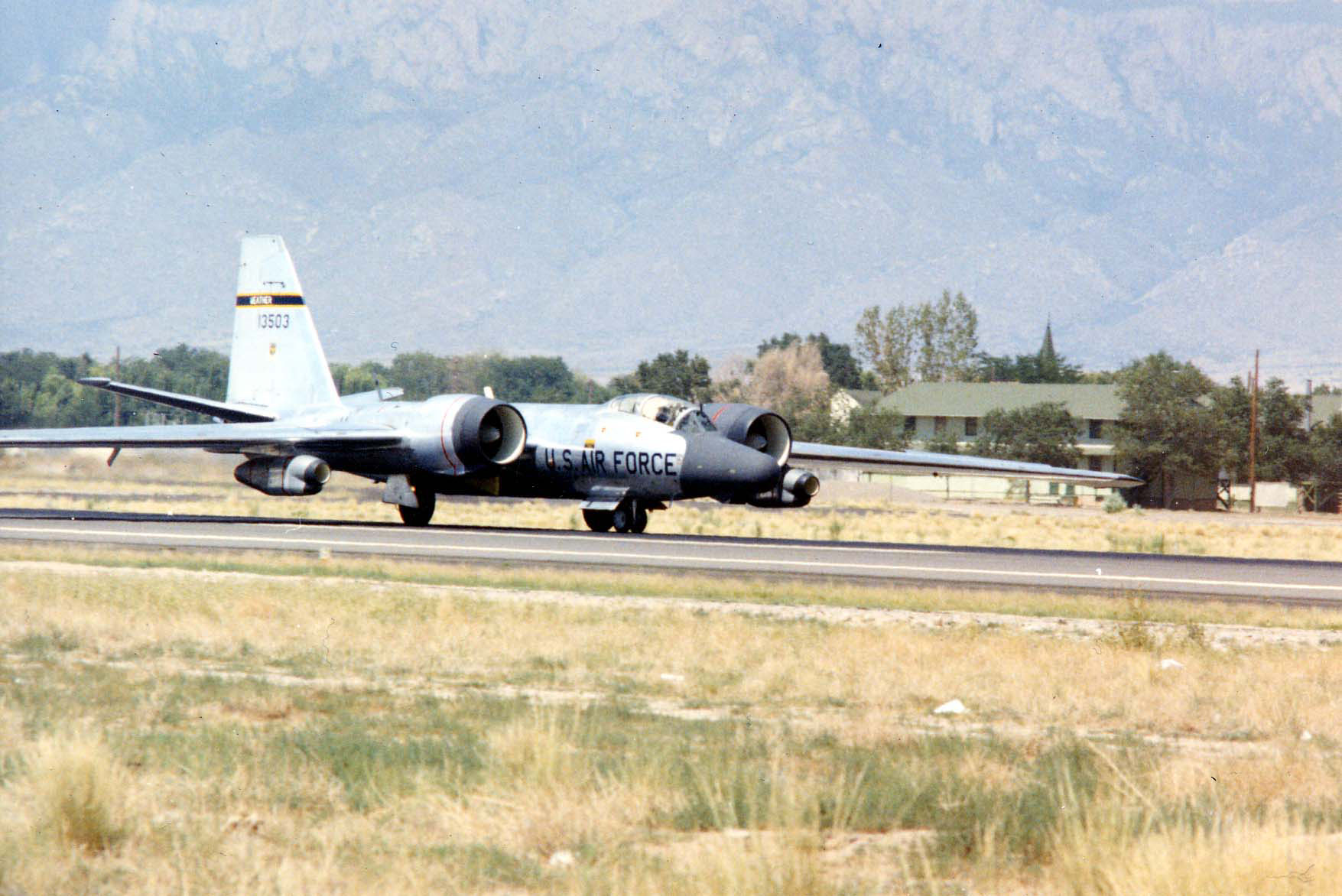RB-57F pilot interview: Flying high with USAF’s ultra high altitude nuclear sniffer-dog

A massively modified Martin B-57 Canberra, the RB-57F was there when America needed something done at very high altitude. Its duties were wildly varied, from photographing the eye of a hurricane to classified nuclear snooping. We spoke to former RB-57F pilot David Baird about flying this incredible machine.
The Blackbird pilot B.C. Thomas said that you were interested in talking to an F model pilot. I flew it in the early ‘70’s. I checked out at the same time as the first NASA guys and in recent years was the President of the B-57 Canberra Assn.
SUPPORT WHAT WE DO BY PRE-ORDERING THE HUSH-KIT BOOK OF WARPLANES VOL.2 >HERE<
How high could the B-57 fly? The F’s max altitude is about 70,000 feet. Most missions were flown at a pre planned altitude, usually 55-65,000. My primary mission, “Cold Bounce “ was always at 62,000.

 First color picture of the eye of a hurricane. “Beulah “ taken by 58WRS around 1967.
First color picture of the eye of a hurricane. “Beulah “ taken by 58WRS around 1967.What was the role of the type?
To the role of the F , I can best say, varied! The primary squadron mission was radioactive sampling in the upper atmosphere. Nearly all airplanes were capable of sampling. Individual airplanes were also configured for specific programs for specific customers. Aircraft “500” which flew “Cold Bounce “ was equipped with an airborne laser package. The mission was mostly flown from Wright-Patterson AFB for the AF Avionics Lab. Other missions included photo recon, ADC Interception exercises, Earth resources, air pollution research, and some actual Weather Reconnaissance! Project Storm Fury studied thunderstorm development and dissipation. I can recall sampling and photographing a huge New Mexico cell that topped 60,000’ and was building at about 5000’ per minute! Los Alamos Scientific Labs (LASL) was our main customer and I can’t go into much detail about their projects, even now. LASL scientists flew in the back seat sometimes and I’d just fly the profile they wanted. We flew weather recon for manned space shots at Cape Canaveral and for certain other classified launches. Four times a year we flew Project Airstream. This was upper atmospheric radiation sampling during a nine-day period flying out of Fairbanks, AK, Albuquerque, Panama and Mendoza, Argentina.

Takeoffs were exciting! Try to hold the brakes while setting take-off power, release brakes and your head snapped back against the headrest. In less than 2500’ , at 120K relax forward pressure on the yoke and it leaps into the air.

At 150 knots (min single-engine control speed) push the power up to max and start pulling back, back, back on the yoke to prevent exceeding max IAS (185kias), continue climb at about 60 degrees of pitch. It would go through 50,000’ with the VVI pegged at 6000’ per minute. Landing was a bit tricky because of the tremendous amount of lift and power (even at idle thrust).

Max Mach is .80 and is super critical. Normal cruise was / is .72. About the same as a Boeing 737.
Approach speed was typically around 110 K, and touchdown 2 knots below approach. If flown faster than recommended, it would float “forever “! Brakes were the weak point in the design. No anti skid, so application had to be judicious. The entire VFR traffic pattern was normally flown at idle power, even with the gear down and spoilers open. There was also a 3 1/2 degree bank limit at touchdown to prevent wing tip runway contact. This made the crosswind limit 15 K.As You asked about handling- excellent at all altitudes. At 60,000’ it could roll right into a 45-60 degree bank turn. Stalls weren’t a problem. The nose would drop very slightly and start flying again. Over speed was a huge danger and was to be avoided. Not a big problem as long as the pilot was paying close attention.

To continue… the best thing about the program was the people! The squadron was selectively manned with all volunteers, so we had the best. We also operated more like a wing. The Commander was a full colonel, we had our own maintenance section, our own medical section with 2 flight surgeons, plans and current ops, and, of course, a large life support section to provide and maintain the full pressure suits. Everyone worked well together and were very good at their jobs!
I can’t think of anything particularly bad about the “F” other than that it was old technology as far as instruments and basic airplane systems. It wasn’t especially fast, but at our operating altitude headwinds weren’t a factor. At those altitudes, everything was critical so staying alert wasn’t a problem. .72 Mach was about 128 knots and stall speed about 118 knots (IAS).
3-word description? Really special, really spectacular! My last flight was out of Yokota on a cold winter day and went through 33,500’ 18 miles from the approach end the runway! By the way, we were at Yokota waiting to sample a Chinese atmospheric nuclear test. Jan, 1974. Everywhere we went we received wonderful support which made for effective mission accomplishment. It was a wonderful time in my life and I wouldn’t change a thing!

SUPPORT WHAT WE DO BY PRE-ORDERING THE HUSH-KIT BOOK OF WARPLANES VOL.2 >HERE<

Ohh so was true about that recon planes over Mendoza, an old guy from that place told me once about some “big wing plane with American markings” taking off Plumerillo AFB .